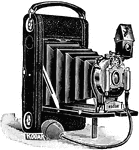Search for "photography"
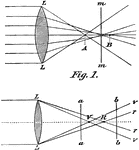
Aberration
"In optics, a deviation in the rays of light when unequally refracted by a lens or reflected…
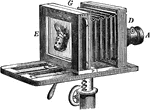
Bellows Camera
"The photographer's camera corresponds to the camera-obscura. A darkened box, adjustable in length,…
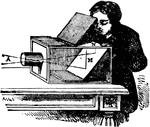
Camera Obscura
"An optical instrument employed for exhibiting the images of objects in their forms and colors, so that…

Watkins's Factorial Calculator
An aluminum set of disks that correctly finds the time needed to develop photos in solution

Woman Standing Behind Camera
An illustration of a woman in a long dress and hat standing behind a camera.
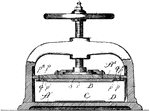
Photographic Negative Treatment
In photography, a negative may refer to three different things, although they are all related. A negative…

